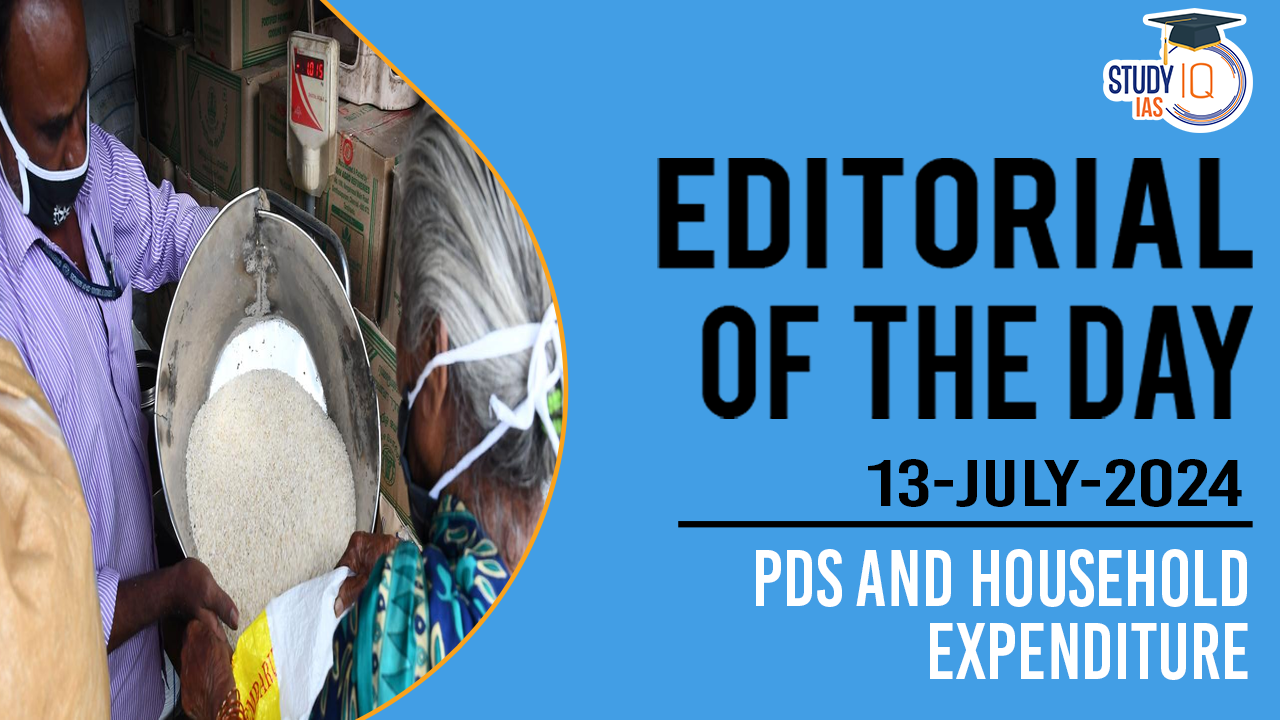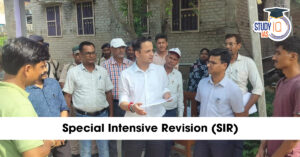Table of Contents
Context: The Household Consumption Expenditure Survey (HCES), 2022-23 illuminated the significant impact of the Public Distribution System (PDS) on diversifying household food consumption.
Objective of PDS
- The Public Distribution System (PDS) in India aims to ensure food security.
- Up to 75% of the rural population and 50% of the urban population are eligible for subsidised foodgrains under the National Food Security Act (NFSA), 2013.
- Subsidised food grains allow households to spend more on other nutrient and protein-rich food items such as vegetables, milk, pulses, eggs, fish, and meat.
Household Consumption Expenditure Survey (HCES):2022-23
- Data Collection: The survey gathered information on both food and non-food items received for free through various social welfare programs.
- Published by: National Sample Survey Office (NSSO)
- Survey Limitations: The HCES does not aim to provide precise coverage estimates for each scheme, generally showing lower coverage than administrative data.
- Errors and Data Interpretation:
- Inclusion Error: Occurs when an ineligible household consumes from the PDS.
- Exclusion Error: Happens when an eligible household does not consume foodgrains from the PDS.
- Research Utilisation: The survey enables examination of the characteristics of households that benefit from social programs, though with careful interpretation needed.
- Imputation of Free Items’ Values
- Methodology: For the first time, the NSSO has imputed values for free received items, enhancing analysis capabilities.
- Metrics Introduced:
- Monthly Per Capita Consumption Expenditure (MPCE): The ratio of monthly consumption expenditure to household size.
- MPCE with Imputation: Incorporates the imputed value of free items into the monthly consumption calculation.
- Value Settings: Imputation values are set at modal unit price and 25th percentile unit price, only for free items, not for subsidised purchases.
What are the Key Findings?
- Food Items:
- At the all-India level, about 94% of the value of imputed items in rural areas and 95% in urban areas are attributable to food items.
- The imputed value for food items for all households, including those not receiving free items, is ₹82 in rural and ₹59 in urban areas.
- MPCE Distribution
- The average MPCE among the bottom 5% of the distribution is ₹1,373 in rural and ₹2,001 in urban areas.
- 20% of those in the bottom 5% of rural MPCE distribution move to the next fractile class (5%-10%) after imputation, affecting about 86 lakh individuals.
- Similar upward movements are observed in urban areas and other fractile classes.
Implications for Poverty Measurement
- Post-report release, there is a debate on redefining the poverty line based on total value of consumption, including free items.
- In-kind social transfers have significant implications for the well-being of households at the bottom end of consumption or income distribution.


 World Population Day 2025, Themes, Histo...
World Population Day 2025, Themes, Histo...
 Special Intensive Revision (SIR) in Biha...
Special Intensive Revision (SIR) in Biha...
 List of Military Exercises of India 2024...
List of Military Exercises of India 2024...





















